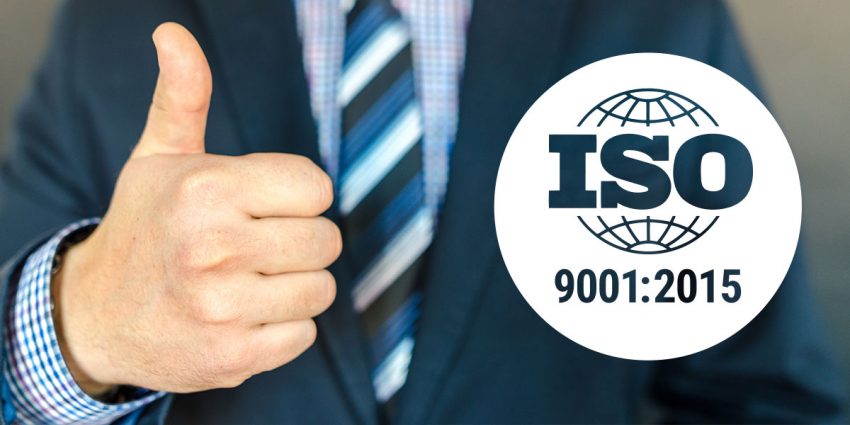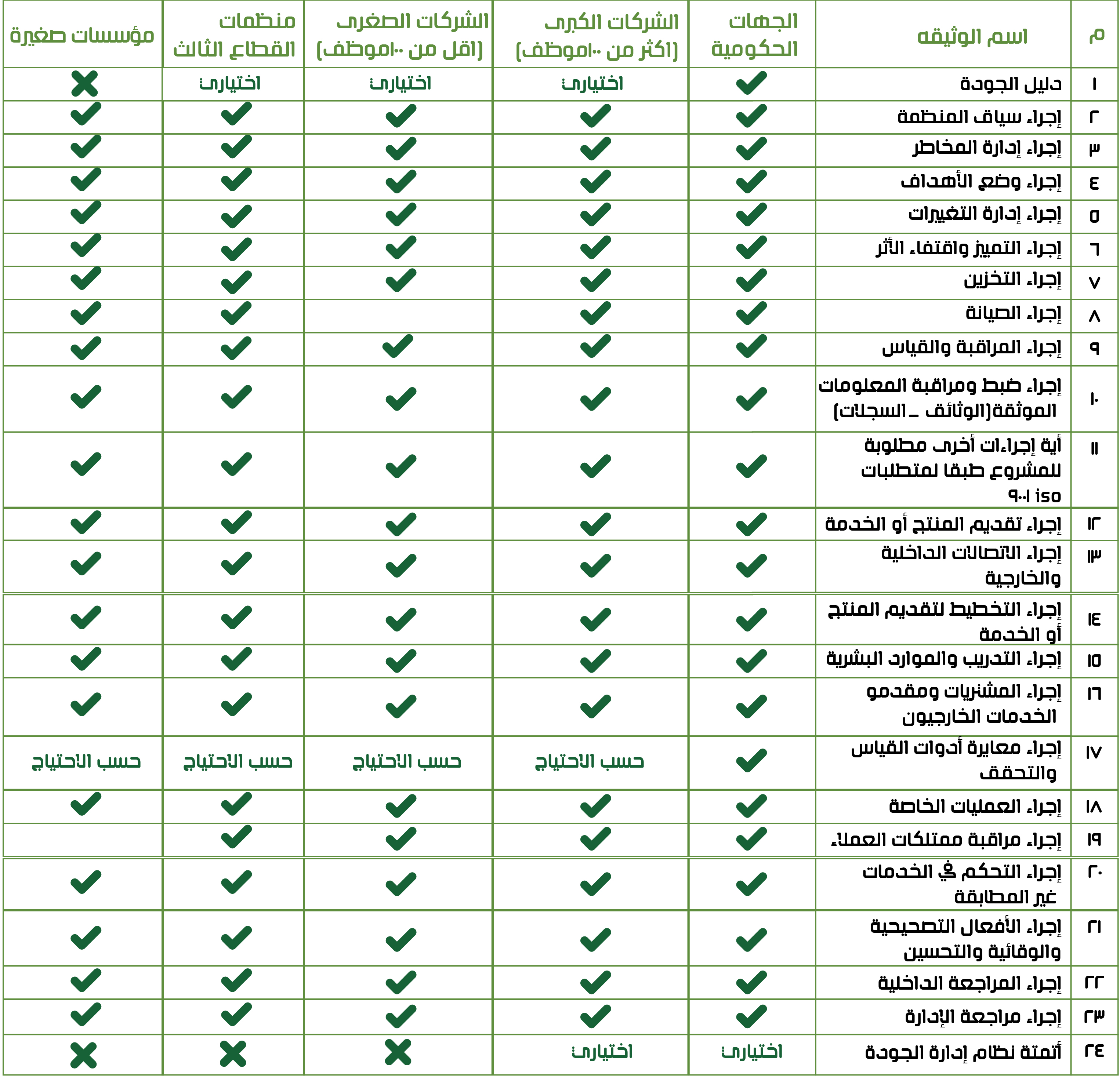Quality Management System ISO 9001:2015

Our consultants are ready to provide our experience, which extends for more than 20 years in helping all types of industrial, commercial and service companies to implement ISO 9001:2015 quality management system standards and obtain the ISO certificate. Through our work, we will be with you step by step to build an effective quality management system that complies with international standards 9001: ISO 2015 and helps you monitor the processes of planning, providing and implementing services and products and determines the performance indicators and quality standards to be monitored.
Obtaining the ISO 9001:2015 certificate has become a goal and a requirement for many bodies and entities around the world with a desire to effectively obtain international recognition. The quality management system applied in it.
Definition of ISO 9001:2015 quality management system
A quality management system (QMS) is defined according to ISO 9001:2015 as
A set of policies, processes and procedures necessary to plan and implement
Providing (products/services) with the aim of ensuring the facility’s ability to fulfill
customer requirements, and the quality management system works to establish the principle of improvement
Continuous improvement of the services and products provided, and the quality management system can
Applying it to any governmental or private facility regardless of its activity
Or its size or geographical location.
Benefits of applying ISO 9001:2015 and obtaining ISO certification

1. Having a documented system for working with a system-based methodology, not individuals, is therefore important
Change personnel and the system will continue to operate continuously.
2. Helping the facility achieve effective and organized management of all its operations
And its activities.
3. Raising the organization’s ability to recognize the risks surrounding it and understand the context.
Understand the facility well, identify interested parties and determine their requirements.
4. Implementing ISO 9001:2015 leads to improving processes and activities and increasing
The facility’s ability to control quality standards throughout the period of providing the product or service
Starting from purchasing equipment and supplies and ending with delivery and after-sales services.
5. Improving the value and outputs of each process and thus reducing all unproductive activities.
necessary, which causes a waste of time, money and effort.
6. Improving the facility’s image in front of customers and increasing their confidence in its products and services
Enterprise.
7. Raising the facility’s competitive ability in front of competitors and staying one step ahead of them.
at least.
8. Low rate of destruction, loss, and defective products and services.
9. Detecting errors and defects early, and increasing the facility’s ability to take action
necessary corrections at the right time.
10. Employees feel proud of their work and improve internal communication processes.
And the outside.
11. Increasing the facility’s market share and increasing sales, revenues and profits.
12. Increasing the capacity of the facility exporting abroad and achieving the requirements of legislative authorities
In source countries, for example, the Saber platform.
13. Increasing the facility’s chances of winning public tenders.
ASDF methodology in implementing ISO 9001:2015 quality management system:
The first stage:
The inaugural meeting and introduction to the project ISO 9001:2015 The inaugural meeting is considered a
Initial preparation of workers, introducing them to the project, its benefits and steps, and explaining the benefits and importance
Compliance with the requirements of ISO 9001 and obtaining the ISO 9001 certificate and the expected positive results.
The company and the employees themselves must break the barriers of fear of change.

:The second stage
GAP Analysis using checklists and direct interviews with workers, operations and management officials, where field visits are conducted to the facility and places where products and services are provided to study the work procedures currently followed with the aim of assessing the current situation. To the processes and determine the extent of their conformity and compatibility with the requirements of the ISO 9001 standard, and identify the technical specifications National and legal regulations and legislation, and knowing the gap between the current situation and the desired situation to be achieved in accordance with the requirements of ISO 9001.>b

Third stage:
Training and qualification of quality teams through the implementation of a set of training programs during the qualification period with the aim of spreading awareness and knowledge and providing trainees with the necessary skills and knowledge to understand the requirements of... ISO 9001 Quality Management System, and the requirements for preparing quality management system documents and learning about the basic concepts, in addition to qualifying a group of facility staff to be Internal auditors

The fourth stage
Documentation Based on the outputs of the gap analysis, after reviewing the established work systems, the consulting team shall create the required documents, which include, but are not limited to:

:Fifth stage
Implementing the documented system and keeping records as evidence of the application after the completion of the preparation of the documented system for quality management ISO 9001:2015, where the most important stage in the project management cycle begins, which is distributing all documents to the concerned party. In the facility, then apply the updated procedures, use all the forms attached to them, and save those records as evidence. on the application, in addition to monitoring the application process to ensure the optimal use of documents and their achievement of their desired goal in the presence of a strong quality management system.

Sixth stage
Internal Audit: This stage verifies that previous operations were performed well and ensures continuity.
The efficiency of the quality system and the commitment of all workers and employees to the roles and tasks assigned to them, as the internal audit plan is prepared by
Consulting team, and carrying out an internal review of the entire system.

Implementing a Management Review Meeting:
As one of the most important requirements of the international standard ISO 9001 to ensure senior management support in implementing the quality system, and demonstrating
Its commitment to this, in addition to reviewing the facility’s overall performance and the availability of the required resources, as the consulting team will assist the facility’s management in implementing the internal audit with complete professionalism.
Items of the ISO 9001:2015 quality system specification:
The requirements of ISO 9001 provide a set of standard elements that will guide an organization in implementing and applying
Quality Management System (QMS), and all requirements have been designed to be applicable to any facility, whether production
Or service, and as such the requirements tell you what elements are mandatory in the quality management system, but not how to implement and achieve them.
those requirements.
The provisions of ISO 9001:2015 are divided into seven sections (called clauses), seven of which are mandatory requirements for a management system.
Quality: assistance and support (item 7), operation (item 8), performance evaluation (item 9) and improvement (item 10)
Section 4: Organization context
Section 5: Leadership
Clause 6: Planning the quality management system
Clause 7: Support and support
Clause 8: Operation
Clause 9: Performance evaluation
Clause 10: Improvement
As for the first three items in the specification (1 to 3)
they are common items in all ISO specifications, and include: The scope of the specification
(Item No. 1), References (Item No. 2), Terminology (Item No. 3).
Guidelines for implementing the quality management system effectively
1. Full commitment by senior management and its pledge to provide the necessary resources and capabilities.
2. Form a team of facility employees that includes all departments and sections.
3. Determine the responsibilities and powers of the team members and choose a team leader.
4. Complete and accurate understanding of the requirements of the quality management system in accordance with ISO 9001:2015.
5. Providing the necessary training for the work team to raise awareness of the requirements and concepts of the quality management system.
6. Building and preparing quality management system documents.
7. Analyze risks, opportunities, goals, and develop a quality policy.
8. Implement the documented system and ensure that all employees of the facility adhere to it.
9. Qualifying a group of the company’s employees to be internal auditors and implementing the internal audit
Over the entire documented system and implementation of a management review meeting.
10. Call the donor and conduct an external review
:Entities and sectors interested in implementing ISO 9001:2015
1. All companies, institutions and bodies of various activities and sizes.
2. Industrial, commercial, service and agricultural companies and institutions.
3. Educational institutions, universities, institutes and schools.
4. Health institutions, hospitals and medical centres.
5.Financial institutions, items, insurance companies and information security.
6. Contracting companies and institutions, building, construction and infrastructure works.
7. Any company, entity, body or institution that provides services or products
.
